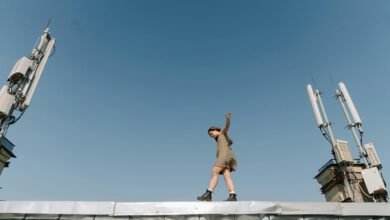1444873950 Peak Hour Traffic Correlations

The analysis of peak hour traffic correlations reveals significant patterns in urban mobility. Commuter behavior, infrastructure quality, and weather conditions emerge as key factors influencing traffic flow. Optimization of traffic signals plays a vital role in alleviating congestion. Understanding these interconnected elements may provide insights into improving commuting efficiency. However, the complexities of these relationships warrant further exploration to fully grasp their implications for urban planning and traffic management strategies.
Analyzing Traffic Patterns During Peak Hours
While understanding traffic patterns during peak hours is crucial for urban planning and infrastructure development, the analysis reveals distinct trends influenced by various factors.
Traffic signal optimization plays a vital role in managing congestion, while commuter behavior analysis indicates how individuals adjust their travel routes and times.
These insights contribute to developing strategies that enhance mobility and promote greater autonomy for urban commuters.
Factors Influencing Traffic Flow
Understanding the factors influencing traffic flow is essential for developing effective transportation systems.
Key elements include traffic signal optimization, which enhances intersection efficiency, and commuter psychology, impacting route choices and travel behavior.
Analyzing these factors provides insights into peak hour dynamics, allowing for informed decisions that promote smoother traffic flow, reduce congestion, and ultimately support individual freedom in mobility within urban environments.
The Role of Weather Conditions
Weather conditions significantly impact peak hour traffic dynamics, influencing both vehicle flow and commuter behavior.
Data indicates that adverse weather events, such as rain or snow, correlate with increased congestion and slower travel times.
Seasonal variations further exacerbate these effects, with summer heat creating unique challenges.
Understanding the weather impact on traffic patterns is essential for effective urban planning and commuter safety strategies.
Impact of Infrastructure on Commuter Behavior
Infrastructure profoundly influences commuter behavior by shaping travel choices and patterns.
Strategic infrastructure investment enhances connectivity, thereby aligning with commuter preferences for efficiency and convenience.
Studies indicate that improved public transport options and better road networks lead to modal shifts, encouraging commuters to opt for sustainable travel methods.
Ultimately, the quality of infrastructure significantly dictates commuting habits, reflecting broader societal values of autonomy and accessibility.
Conclusion
In the intricate tapestry of urban mobility, peak hour traffic emerges as a symphony, where each instrument—commuters, weather, and infrastructure—plays a vital role. The conductor, traffic signal optimization, seeks harmony amidst the chaos. However, when storms roll in, or roads crumble, the melody falters, amplifying discord. Thus, urban planners must wield their insights like skilled artisans, crafting a resilient framework that harmonizes these elements, ensuring a fluid and safe commuting experience for all.




